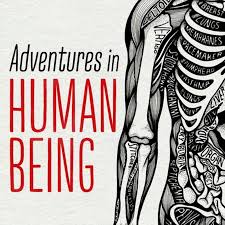In his book Adventures in Human Being, physician and author Gavin Francis portrays different structures of the body and among them are the lungs, which he calls “the breath of life”.
“…Lungs are the least dense organs in the body, because they are composed almost entirely of air. The word „lung“ comes from a Germanic root lungen, which itself arises from another Indo-European word meaning „light“.
Traditional Chinese, Ayurvedic and Greek medicine all maintained that air carried invisible spirits or energies (which they called, respectively, qi, prana or pneuma). From those perspectives our bodies are bathed in spirit, our lungs the interface between the spiritual and the physical world. For the Greeks, as commemorated by St John‘s Gospel, the first principle was logos – the word – existence was conjured into being through sounds produced by the breath. Written texts, even those never intended to be read aloud, are often punctuated according to the needs of a speaker to take a breath. Written texts, even those never intended to be read aloud, are often punctuated according to the needs of a speaker to take a breath.
The lungs are light as spirit because their tissue is so thin and delicate. The membranes within them are arranged so as to maximise exposure to breath, much as the leaves on deciduous trees maximise exposure to air. Just as leaves draw in carbon dioxide and leak oxygen, lungs draw in oxygen and leak carbon dioxide. If you were to stretch flat all the membranes of an adult‘s lungs they would occupy over a thousand square feet; equivalent to the leaf coverage of a fifteen-to twenty-year-old oak. Listening with a stethoscope you can hear the flow of air across those membranes, like the rustle of leaves in a light breeze. When doctors listen to the breath, that‘s what they want to hear: an openness connecting breath to the sky – lightness and the free motion of air. Doctors use stethoscopes to sound out solidity in the lungs: if tumour or infection consolidates the tissues, instead of the muted sigh of the breath you can hear the whistle and clatter of disease. With a stethoscope we listen for „increased vocal resonance“: the crisp transmission of words spoken by the patient. We listen for „bronchial breathing“: the sound of air whistling through the large airways. These sounds are transformed acoustics of a heavy, solidified lung. Infection rather than tumour gives rise to a third sound, called „crepitation“, when pus and mucus make the finer membranes stick to one another. Thousands of tiny air chambers then pop open and close with each waft of breath, sounding as if the lung had been enveloped in a thin film of bubble wrap.
When I think about lungs, the associations that come to mind are of light, airiness and vitality. When they become diseased they lose their lightness; they become ballast that pulls us towards the grave.”
Source: Gavin Francis, Adventures in Human Being, Profile Books Ltd, 2015

